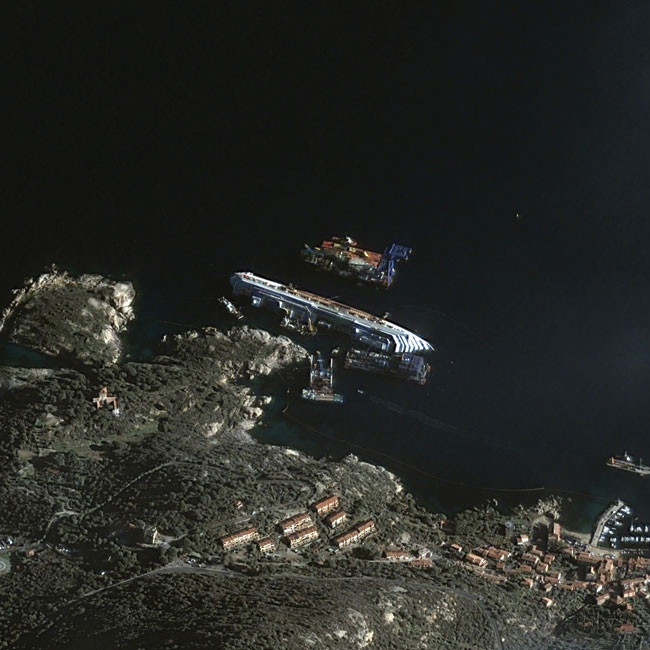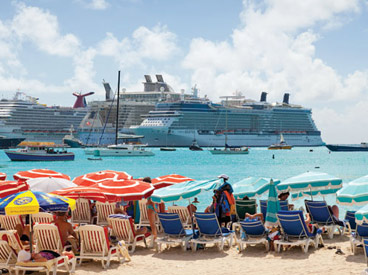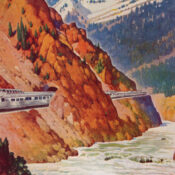Air pollution from the ships’ high-sulfur-diesel-fueled engines is another problem. Arriving, departing and idling in ports, the ships’ fuel exhaust releases carbon monoxide, sulfur dioxide, and nitrogen oxide that the EPA considers human carcinogens.

Responding to the growing evidence of air pollution from cruise ships and large marine vessels, the EPA passed a rule that took effect in August 2012 to establish a 200-mile buffer zone around the coasts of the United States, including Alaska and the main Hawaiian Islands. Within that zone, which was initially adopted by the International Maritime Organization, these ships are required to burn cleaner fuel to reduce their nitrogen oxides and sulfur oxides that pollute the air. The new rule will prevent as many as 31,000 premature deaths every year, according to the EPA.
While the EPA tries to protect the environment, the cruise industry watches its reputation carefully with multimillion-dollar advertising campaigns, a ubiquitous presence on the Internet and underwriting the expenses of the travel press who are largely mute about the effect of the industry on the environment or the ports they visit.
The industry also has made friends in the nonprofit media, think tanks, and organizations by offering them fundraisers aboard cruise ships at special prices. These cruises offer fans and donors the chance to spend up to a week listening to their favorite personalities. At the same time, the price they pay for the cruise fills the organization’s coffers with tens of thousands of dollars. Nonprofits from across the political spectrum take advantage of these offers. Media stars like Diane Rehm of National Public Radio, Katrina vanden Heuvel of The Nation magazine, and Gwen Ifill of public television’s News Hour, have hosted cruises to the Caribbean and Europe for their organizations. More than one critic has asked if it wasn’t hypocritical for such organizations to make hundreds of thousands of dollars on cruise ships that pay poor wages and routinely dump pollutants, the exact practices they deplore.
On the conservative side, the Weekly Standard and the National Review magazines famously made history when their fundraising cruise docked in Juneau, Alaska, in 2007. The top staff and donors were welcomed by then-Governor Sarah Palin, who swept them off their feet. When they returned to Washington, some of the editors, like Fred Barnes of the Standard, promoted this fledgling politician as a bright new face of the Republican Party. One year later Governor Palin was the Republican nominee for vice president.
The power of travel, the reason why people go dreamy-eyed when they speak of that first taste of other worlds, is the liberating freedom of taking a break from their own lives. So it’s ironic that the industry’s greatest struggle may actually be against its very success. In a recent assessment Lloyds Cruise International said that the industry’s “strategy of gigantism” risked undermining the cruise experience on and off the ship. The report said that megaships “with 5,400 passengers may cut the operating cost per passenger but is too large for most ports, and arguably too sizeable to provide a personal experience or to offer either a tranquil or an adventurous holiday.”
While some in the industry call this kind of criticism “elitist,” they might be well advised to heed the warning of critics like Jonathan Tourtellot, director of the National Geographic Center for Sustainable Destinations: “Since when,” he asks, “is it elitist to show respect for a beautiful square or beach and for the people who live there and want to protect the beauty that brought the tourists in the first place?”
Become a Saturday Evening Post member and enjoy unlimited access. Subscribe now



